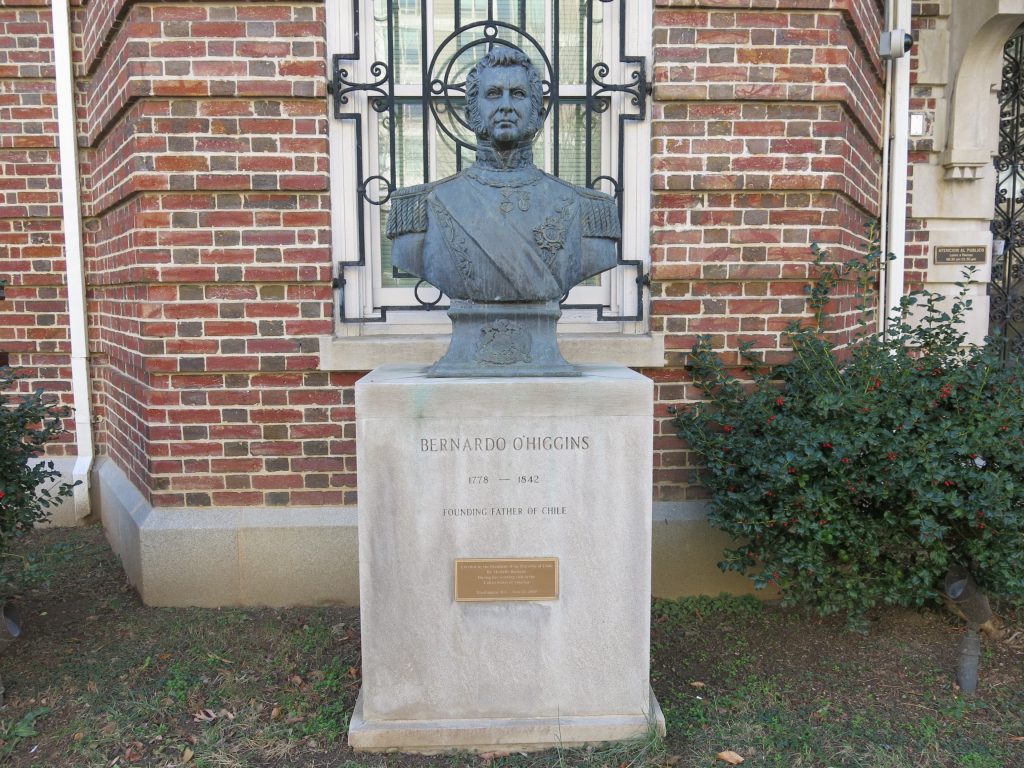
Bernardo O’Higgins was a Chilean independence leader who, together with José de San Martín, freed Chile from Spanish rule in the Chilean War of Independence. He was a wealthy landowner of Spanish and Irish ancestry. Although he was the second Supreme Director of Chile (1817–1823), he is considered one of Chile’s founding fathers, as he was the first holder of this title to head a fully independent Chilean state.”

2200 block of P Street, NW
Well before the Holodomor Memorial was Taras Shevchenko:
“a Ukrainian poet, writer, artist, public and political figure, as well as folklorist and ethnographer. His literary heritage is regarded to be the foundation of modern Ukrainian literature and, to a large extent, the modern Ukrainian language. Shevchenko is also known for many masterpieces as a painter and an illustrator.”

Dedication description and quote after the jump. Read More

Located off 16th Street on the Mt. Pleasant side in full golden glory is Guglielmo Marconi:
“Guglielmo Marconi, 1st Marquis of Marconi was an Italian inventor and electrical engineer, known for his pioneering work on long-distance radio transmission and for his development of Marconi’s law and a radio telegraph system. He is often credited as the inventor of radio, and he shared the 1909 Nobel Prize in Physics with Karl Ferdinand Braun “in recognition of their contributions to the development of wireless telegraphy”. An entrepreneur, businessman, and founder in Britain in 1897 of The Wireless Telegraph & Signal Company (which became the Marconi Company), Marconi succeeded in making a commercial success of radio by innovating and building on the work of previous experimenters and physicists.”



From Franklin Square Park on the 14th Street side
“was an officer in the Continental Navy during the American Revolutionary War and later in the United States Navy. He is widely credited as “The Father of the American Navy” (and shares that moniker with John Paul Jones) and was appointed a Captain in the Continental Navy on December 7, 1775. He was the first Captain placed in command of a US warship commissioned for service under the Continental flag.
After the war, he became America’s first commissioned naval officer, at the rank of Commodore, receiving his commission from President George Washington in 1797.”


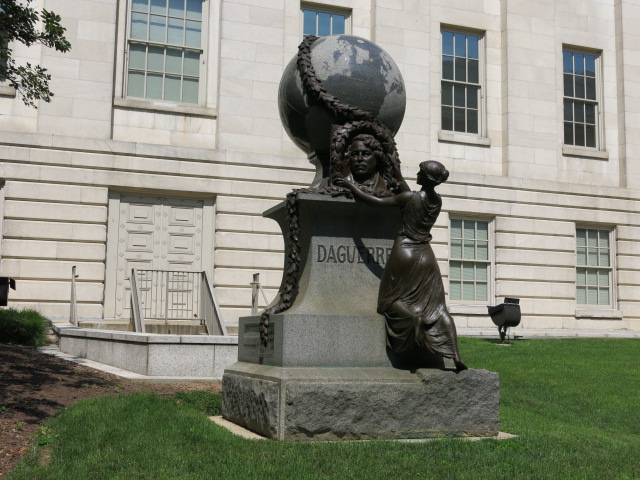
7th Street outside the National Portrait Gallery across from the Verizon Center
“(18 November 1787 – 10 July 1851) was a French artist and photographer, recognized for his invention of the daguerreotype process of photography. He became known as one of the fathers of photography. Though he is most famous for his contributions to photography, he was also an accomplished painter and a developer of the diorama theatre.”
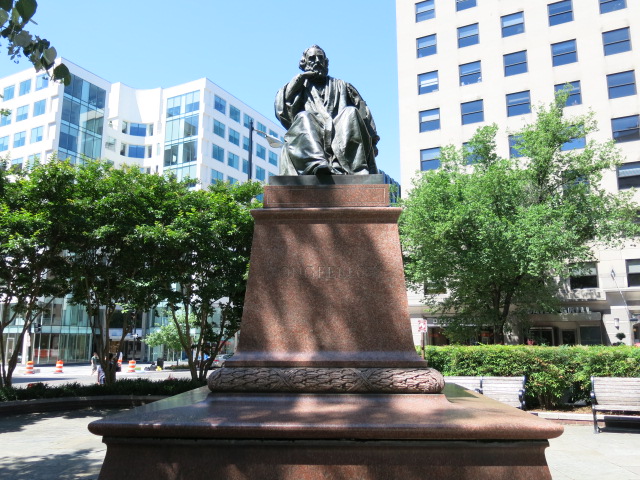
Pocket park at Connecticut and M St, NW
“Henry Wadsworth Longfellow (February 27, 1807 – March 24, 1882) was an American poet and educator whose works include “Paul Revere’s Ride”, The Song of Hiawatha, and Evangeline. He was also the first American to translate Dante Alighieri’s The Divine Comedy and was one of the five Fireside Poets.”
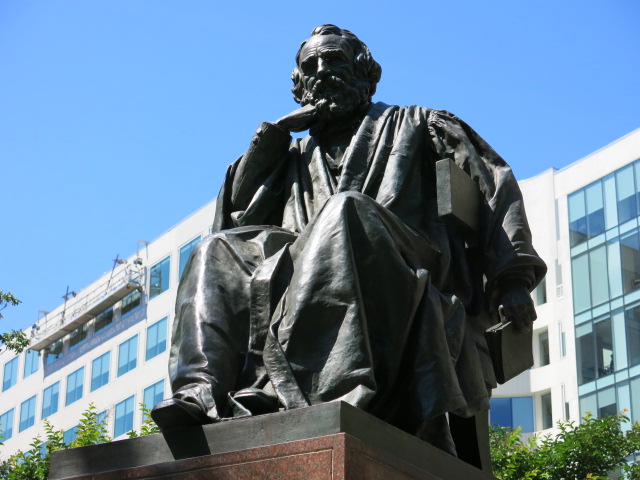
And in other cool ‘Who are these people?’ news – thanks to a reader for sending these old clippings from the Library of Congress:
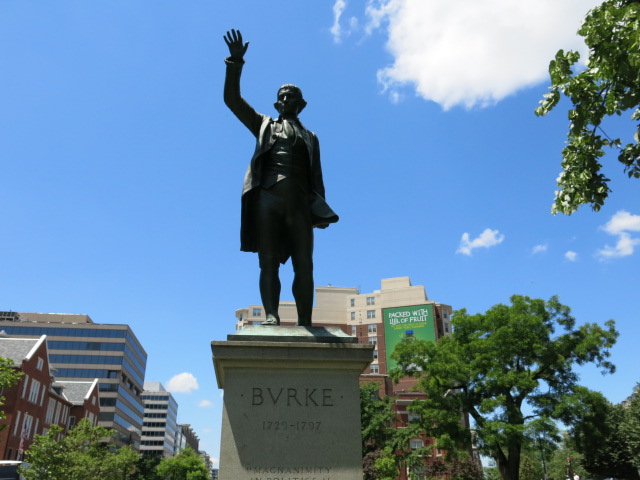
Perched at 11th and Massachusetts Ave, NW – Edmund Burke:
“an Irish statesman, author, orator, political theorist and philosopher, who, after moving to England, served for many years in the House of Commons of Great Britain as a member of the Whig party.
He is mainly remembered for his support of the cause of the American Revolutionaries, and for his later opposition to the French Revolution. The latter led to his becoming the leading figure within the conservative faction of the Whig party, which he dubbed the “Old Whigs”, in opposition to the pro–French Revolution “New Whigs”, led by Charles James Fox.
Burke was praised by both conservatives and liberals in the 19th century. Since the 20th century, he has generally been viewed as the philosophical founder of modern conservatism.”

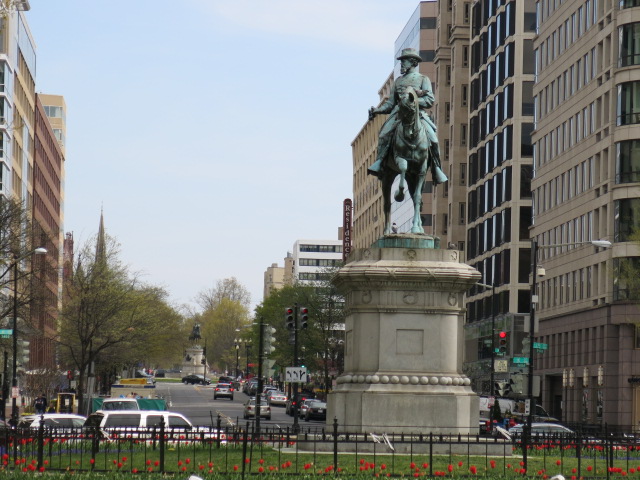
Note Vol. 4’s George H. Thomas in the background
Conveniently located in McPherson Square – James Birdseye McPherson [Ed. Note: Greatest middle name, not a nickname, to date]:
“(November 14, 1828 – July 22, 1864) was a career United States Army officer who served as a General in the Union Army during the American Civil War. He was killed at the Battle of Atlanta, the second highest ranking Union officer killed during the war.”
Interesting to note that by age 35 he was a Major General, also the age he was killed in battle.


My favorite from Meridian Hill Park – Jeanne d’Arc:
“Joan of Arc nicknamed “The Maid of Orléans” (French: La Pucelle d’Orléans), is considered a heroine of France and a Roman Catholic saint. She was born to a peasant family at Domrémy in north-east France. Joan said she received visions of the Archangel Michael, Saint Margaret and Saint Catherine instructing her to support Charles VII and recover France from English domination late in the Hundred Years’ War. The uncrowned King Charles VII sent Joan to the siege of Orléans as part of a relief mission. She gained prominence after the siege was lifted in only nine days. Several additional swift victories led to Charles VII’s coronation at Reims. On 23 May 1430, she was captured at Compiègne by the English-allied Burgundian faction, was later handed over to the English, and then put on trial by the pro-English Bishop of Beauvais Pierre Cauchon on a variety of charges, was convicted on 30 May 1431 and burned at the stake when she was about 19 years old.
Twenty-five years after her execution, an inquisitorial court authorized by Pope Callixtus III examined the trial, pronounced her innocent, and declared her a martyr.[9] Joan of Arc was beatified in 1909 and canonized in 1920. She is one of the nine secondary patron saints of France, along with St. Denis, St. Martin of Tours, St. Louis, St. Michael, St. Remi, St. Petronilla, St. Radegund and St. Thérèse of Lisieux.”
You can see the full unveiling ceremony from Jan. 6th 1922 here.
“Ceremony of unveiling a statue of Jeanne d’Arc in Meridian Park. Crowd assembled for the ceremony. President and Mrs Warren G Harding arrive at ceremony. Officials speak at stand. Unveiling of Jeanne d’Arc statue. Flags on poles. Man places bouquet and flowers in front of the statue. Secretary of War, John W Weeks speaks. Side view of statue. Various officials speak at ceremony.”
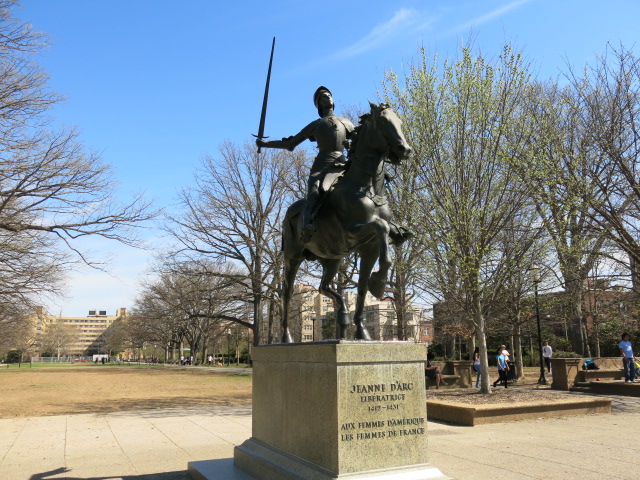
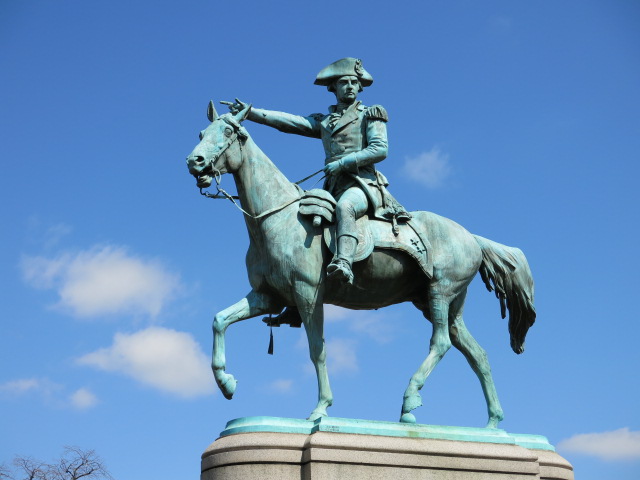
One of our first from the Revolutionary war – Nathanael Greene:
“Nathanael Greene was a major general of the Continental Army in the American Revolutionary War, known for his successful command in the Southern Campaign, forcing British general Charles Cornwallis to abandon the Carolinas and head for Virginia. When the war began, Greene was a militia private, the lowest rank possible; he emerged from the war with a reputation as George Washington’s most gifted and dependable officer. Many places in the United States are named for him. Greene suffered financial difficulties in the post-war years and died suddenly of sunstroke in 1786.
Nickname(s)
“The Savior of the South”
“The Fighting Quaker”
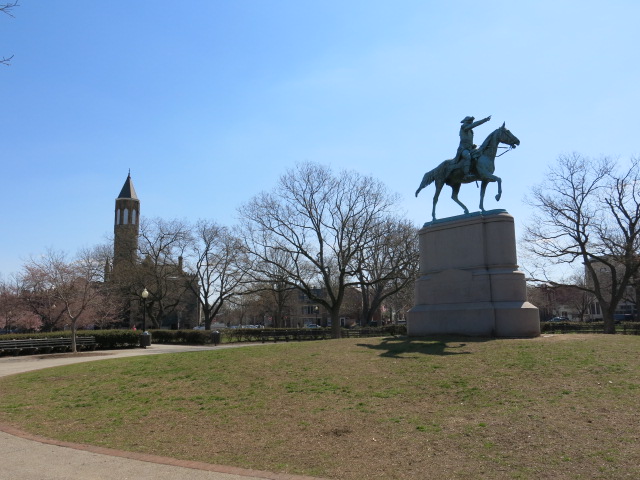
Stanton Park at 5th and C Street, NE


